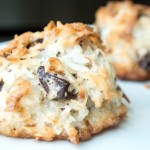al·che·my [al-kuh-mee], n.
1. a form of chemistry and speculative philosophy practiced in the Middle Ages and the Renaissance and concerned principally with discovering methods for transmuting baser metals into gold and with finding a universal solvent and an elixir of life.
2. any magical power or process of transmuting a common substance, usually of little value, into a substance of great value.
That is how I feel about making fresh ricotta cheese. In honor of this post, I am adding an “alchemy” tag, for those recipes where something truly common is transformed into something of great value … something magical … maybe short of “elixir of life,” but hang with me, you never know.
Would you believe you can make fresh cheese that will be ready to eat – start to finish – in under 15 minutes? I promise you can!
Use fresh ricotta cheese in lasagna, on pizzas, or serve with some cinnamon and fresh fruit for breakfast (that is, if you have any left after you taste one bite of the fresh, warm finished product).
You will need cheesecloth to make this recipe, which can be easily found at any kitchen store, most grocery stores, or of course, online.
- 1 quart (4 c) organic whole milk
- ½ c heavy cream
- ¼ t kosher salt
- 2-3 t fresh lemon juice
- Place a large strainer over a larger bowl, and line the strainer with two layers of cheesecloth. My strainer sat very close to the bottom of the bowl, so I crumpled a few balls of tin foil to separate them. I also use binder clips to hold the cheesecloth in place.
- In a dutch oven, slowly bring milk, cream, and salt to a rolling boil over moderate heat. Stir often with a wooden spoon, scraping the bottom. You do NOT want the milk to scorch.
- Once the mixture is boiling, add the lemon juice, then turn off heat and stir constantly, until the mixture curdles, about 2 minutes.
- Pour the mixture into the lined sieve and let it drain for a few minutes. Pick up the cheese cloth that has caught the curds and place in a smaller bowl. and chill, covered. (You can discard the liquid in the large bowl.)
- The ricotta will last a few days in the refrigerator.
Yep, that easy!
Original link: http://www.cherryteacakes.com/2011/07/neapolitan-spinach-pesto-ricotta-pizza.html
Updates:
1. Be sure to use fresh lemon juice to get maximum curd-age (lesson learned from loyal friend and commenter, Holly).
2. I tried this with organic skim milk (still with the 1/2 c heavy cream) this morning – with great results! The curds were a bit bigger, and it tasted just as delicious. Do not get me wrong, the whole milk version was probably a bit richer, but the skim would be perfect to mix in to a dish like pasta or lasagna if you are looking for something lighter (I usually am). I could tell it was lower-fat in the same way that you can tell frozen yogurt is not ice cream – does not stop me from eating and enjoying it!
3. I was all set to make Spinach – Ricotta Gnudi and realized I had forgotten to purchase heavy cream! I was so disappointed. But I found one recipe online that did not require heavy cream, so I went ahead and tried it. Guess what – it worked perfectly for the gnudi. I am sure it adds a bit of richness, as heavy cream would do for any recipe, but especially when you are incorporating ricotta cheese into another recipe, heavy cream is not a “must.”












I made this tonight! It wasn’t curdling at first, but an extra bit of lemon juice did the trick (the curds are very small, but the whole thing comes together beautifully in the strainer). I stirred it into gluten free pasta with bacon, spinach, parmesan, and garlic. SO good.
Good to hear! Yes the curds are very small in the pot (I assumed it would look like cottage cheese but ricotta is much smaller and there is quite a high ratio of liquid to curds). And you are right, the magic happens in the strainer!
This is so hard to find around here so we always buy it when we do. Now we don’t have to wait, thanks Becky!